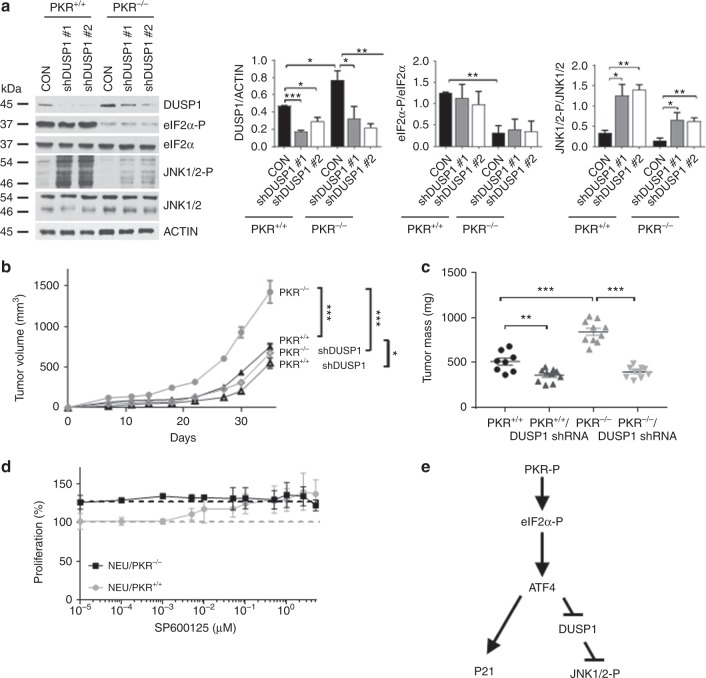Fig. 4.
PKR-dependent DUSP1 inhibition contributes to mouse NEU tumor suppression. a Immunoblot analyses of NEU PKR+/+ and PKR−/− tumor cells lacking (CON, cells infected with insert-less lentiviruses) or expressing 2 different DUSP1 shRNAs by lentivirus infection. The graphs represent the quantification of blots from 3 biological replicates and are shown as mean ± SEM *p < 0.05; **p < 0.01; ***p < 0.001. b Tumor growth of proficient, as well as DUSP1-deficient (shRNA) NEU PKR+/+ and PKR−/− cells in 5 SCID mice. Each mouse received two injections of 5 × 105 cells (n = 2 × 5 = 10). Transplantation of mice with DUSP1-deficient cells was performed with a mix of an equal number of cells (2.5 × 105) expressing DUSP1 shRNA 1 or 2. c Graphs represent the mass (mg) of proficient and DUSP1-deficient tumors in SCID mice at 35 days post transplantation. b, c Data represent mean ± SEM. *p < 0.05; **p < 0.01; ***p < 0.001. d Proliferation rates of NEU PKR+/+ or NEU PKR−/− cells measured by Sulforhodamine B in the presence of the indicated concentrations of the JNK1/2 inhibitor SP600125 for 3 days. Data represent the average of 3 biological replicates. e Schematic representation of the signaling properties of PKR and eIF2α-P. ATF4 functions downstream of eIF2α-P to increase P21CIP1 and decrease DUSP1 leading to stimulation of JNK1/2 activity and inhibition of proliferation of mouse NEU tumor cells

